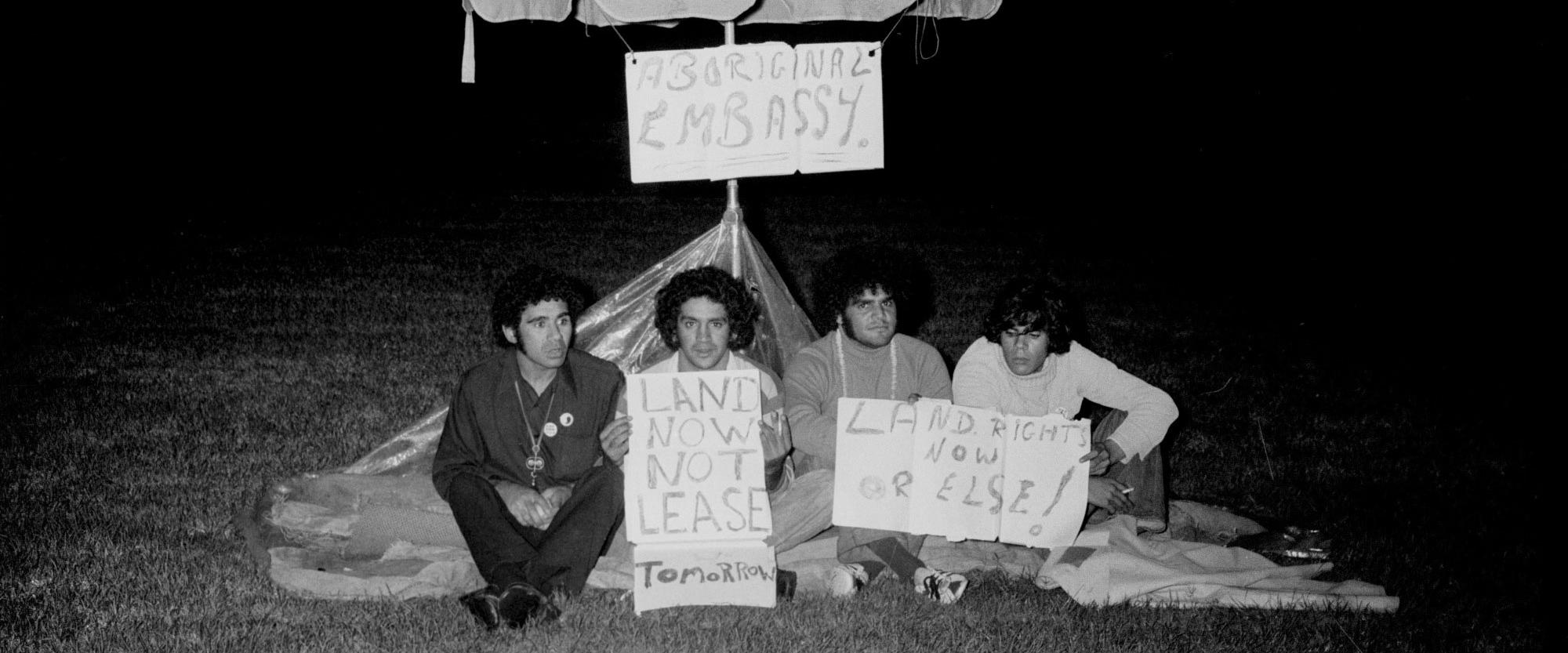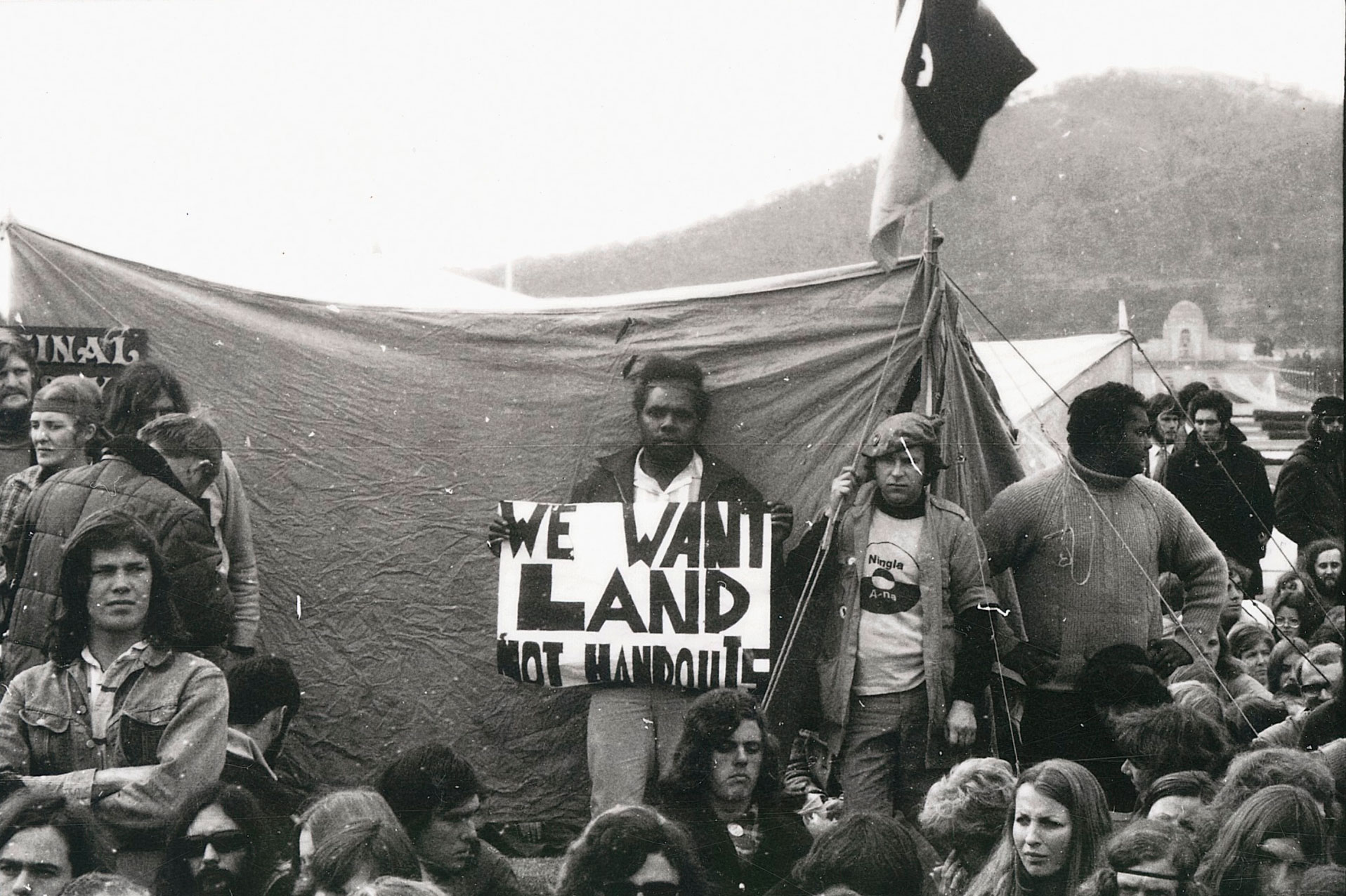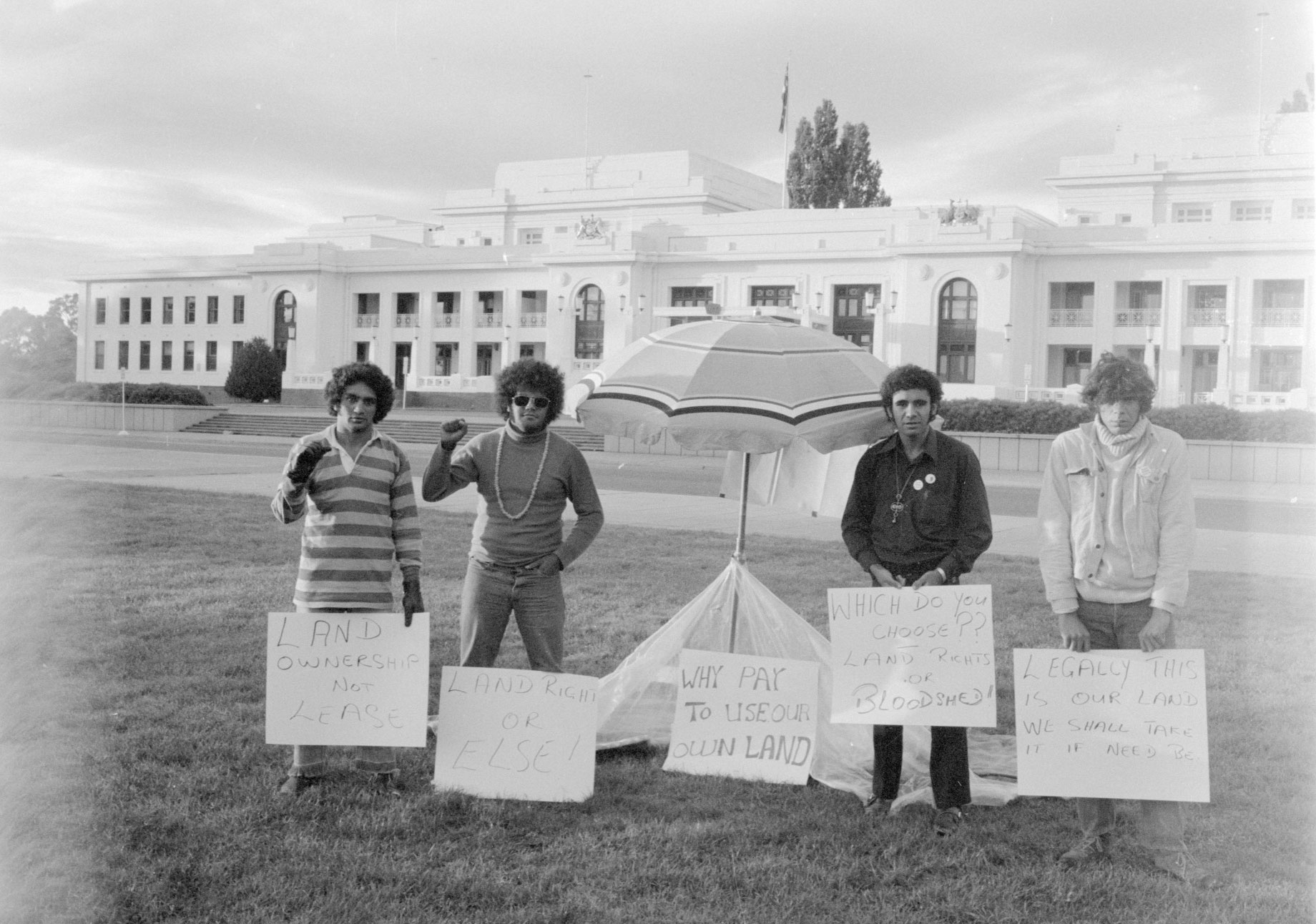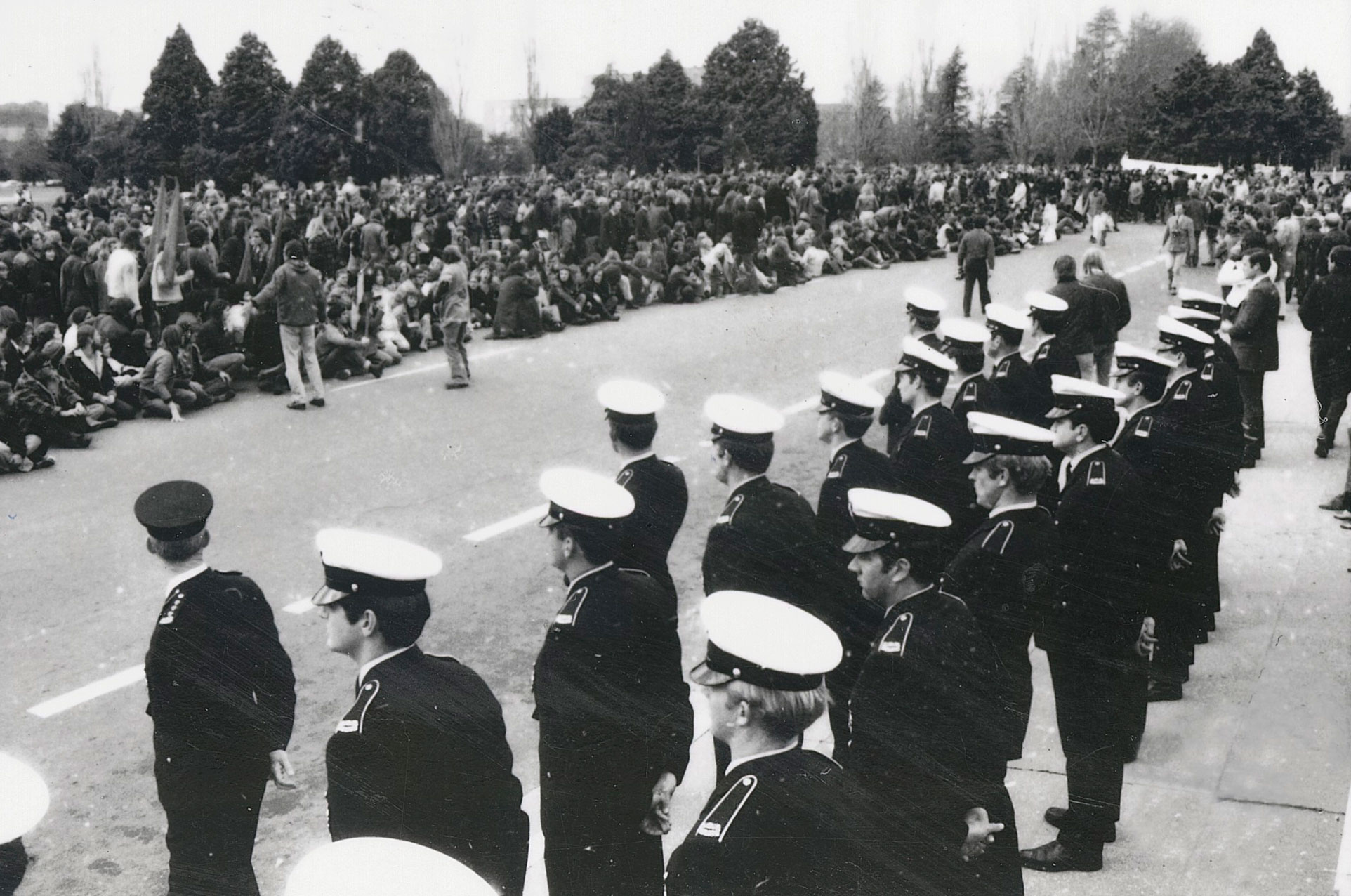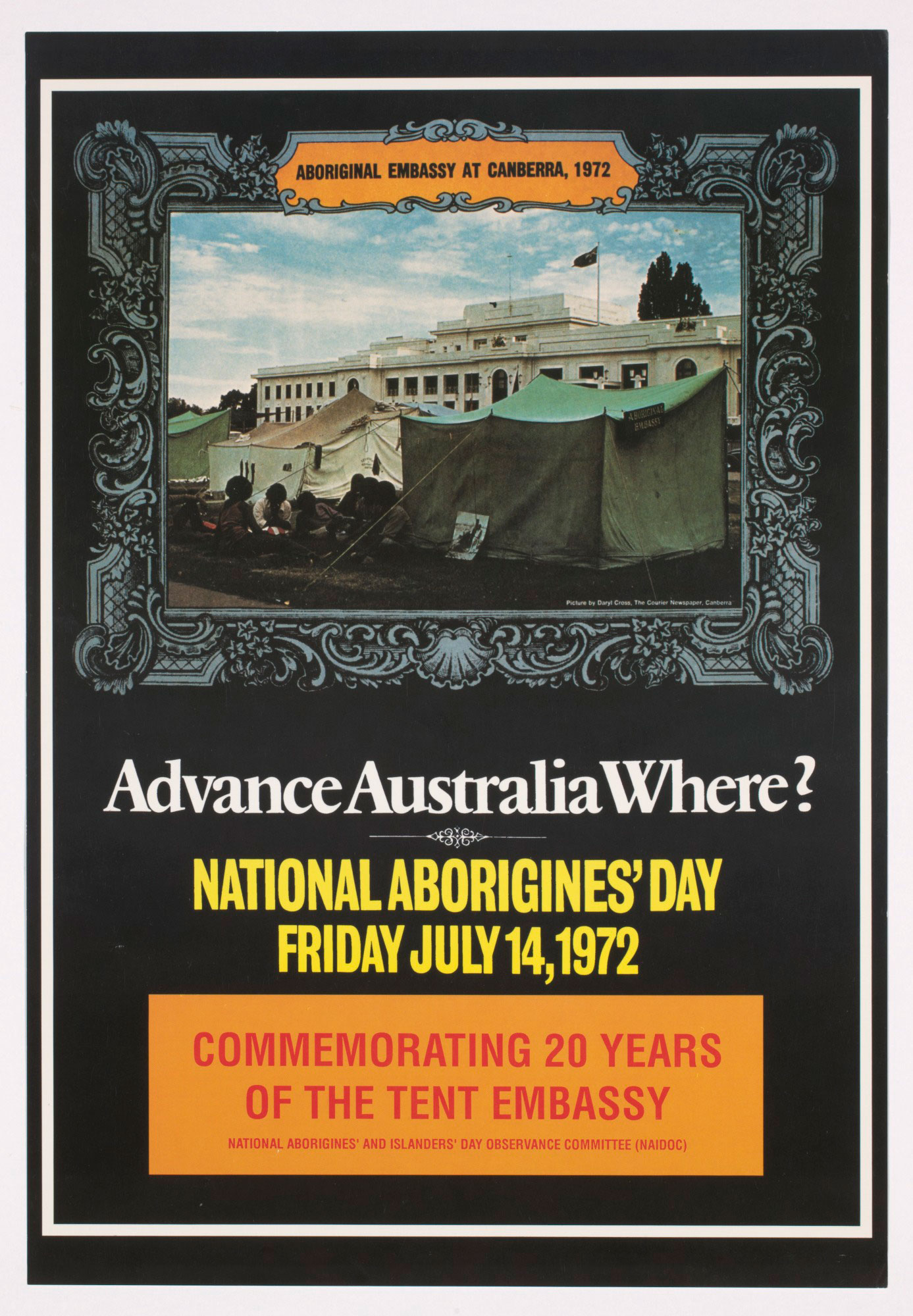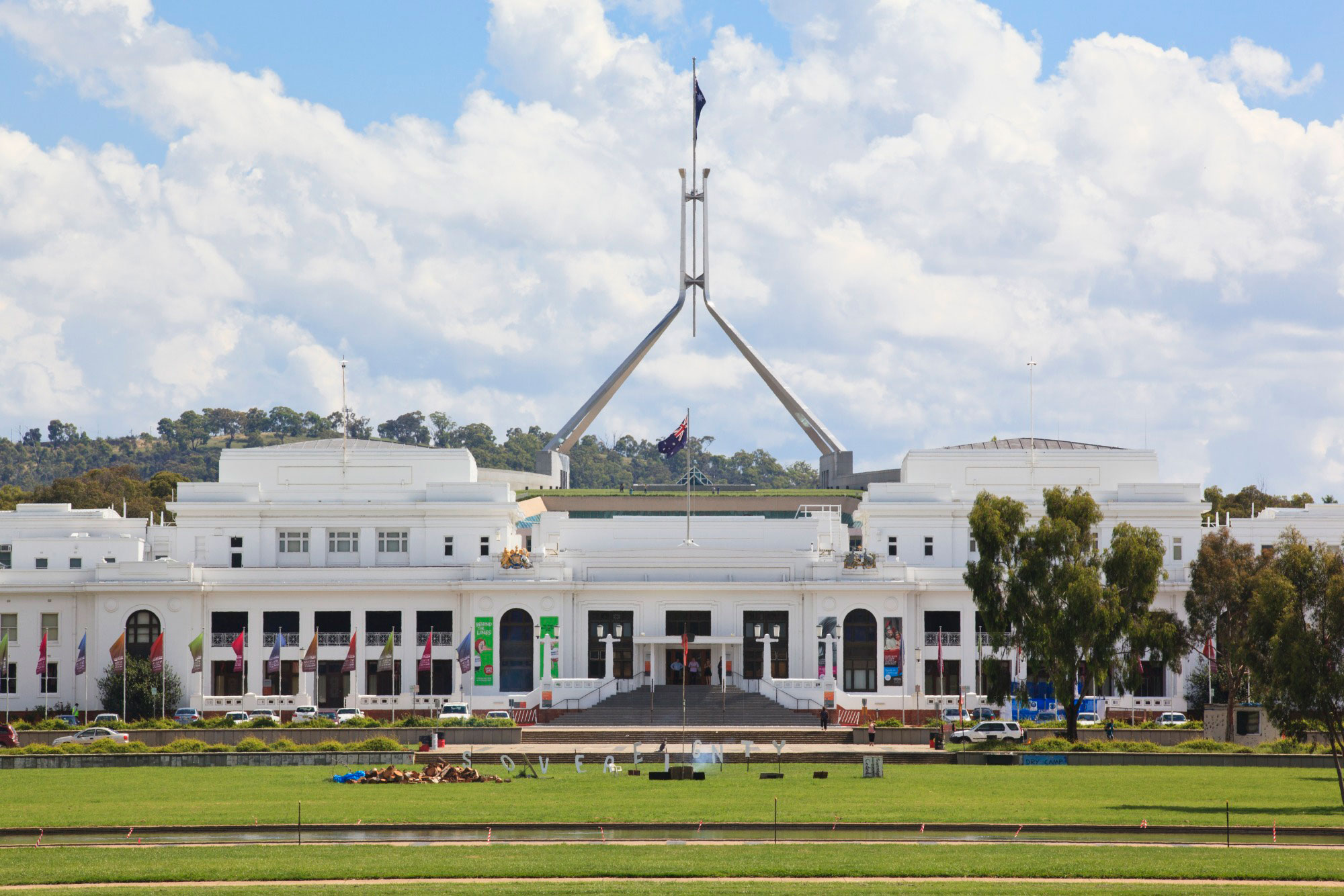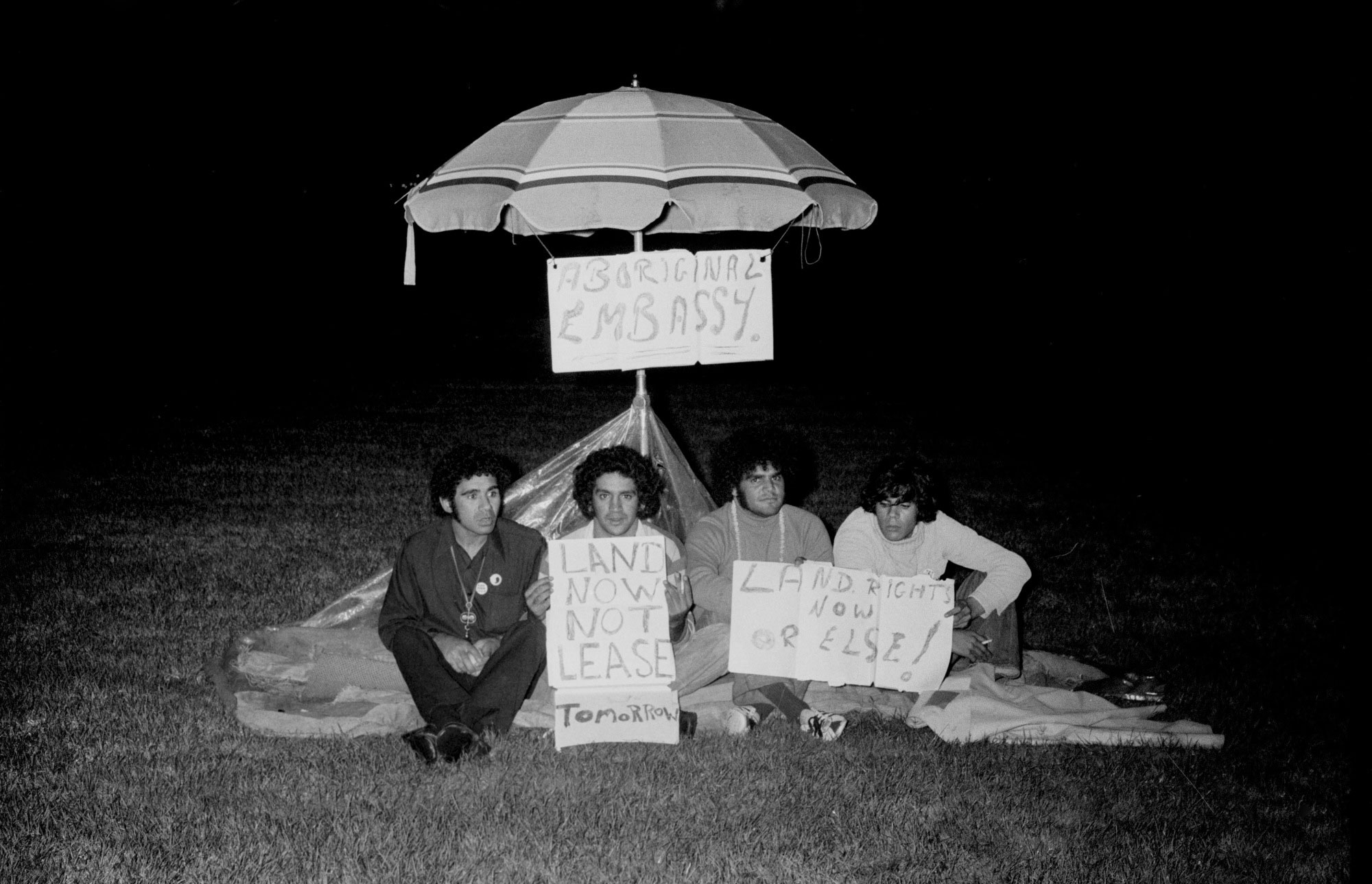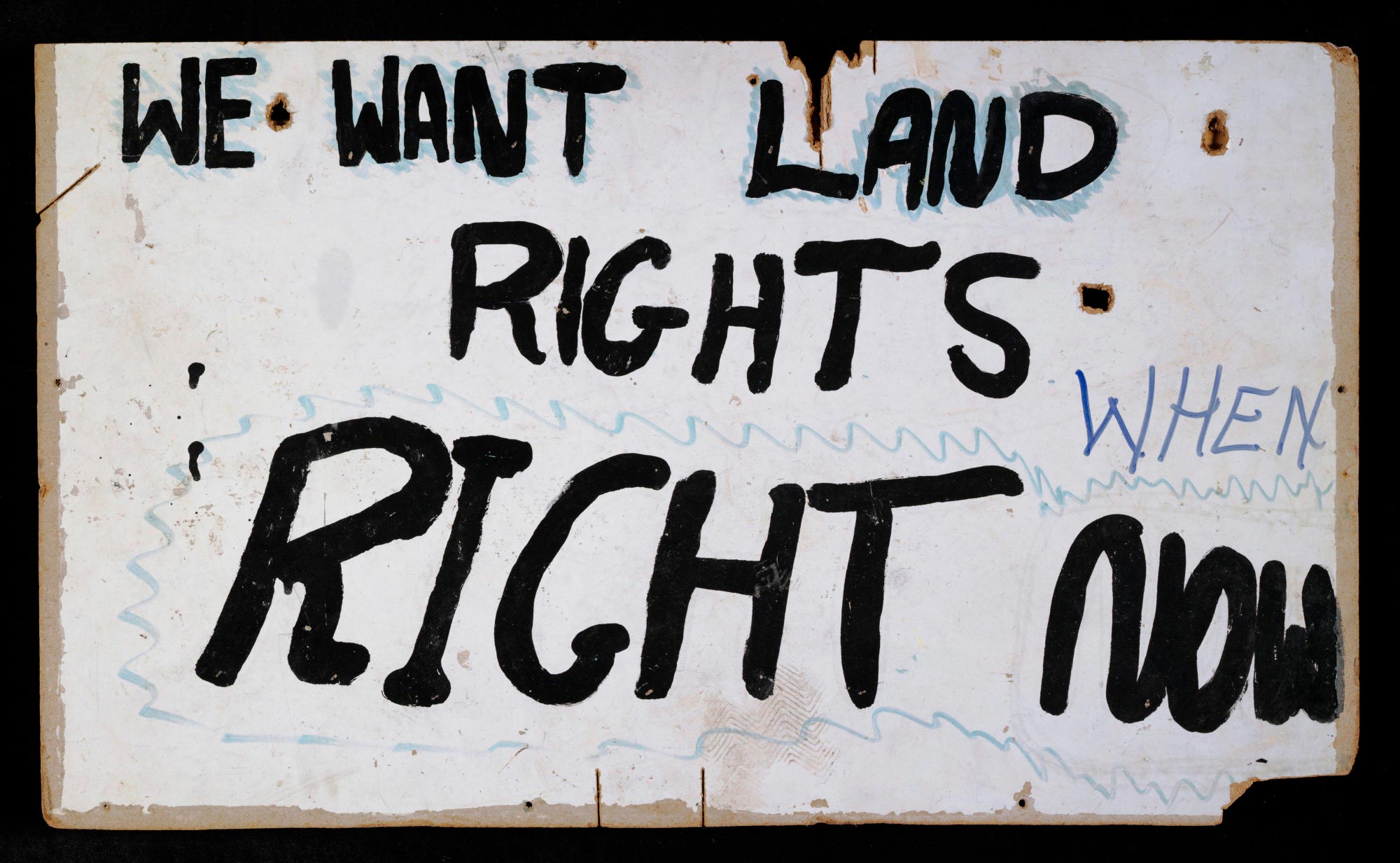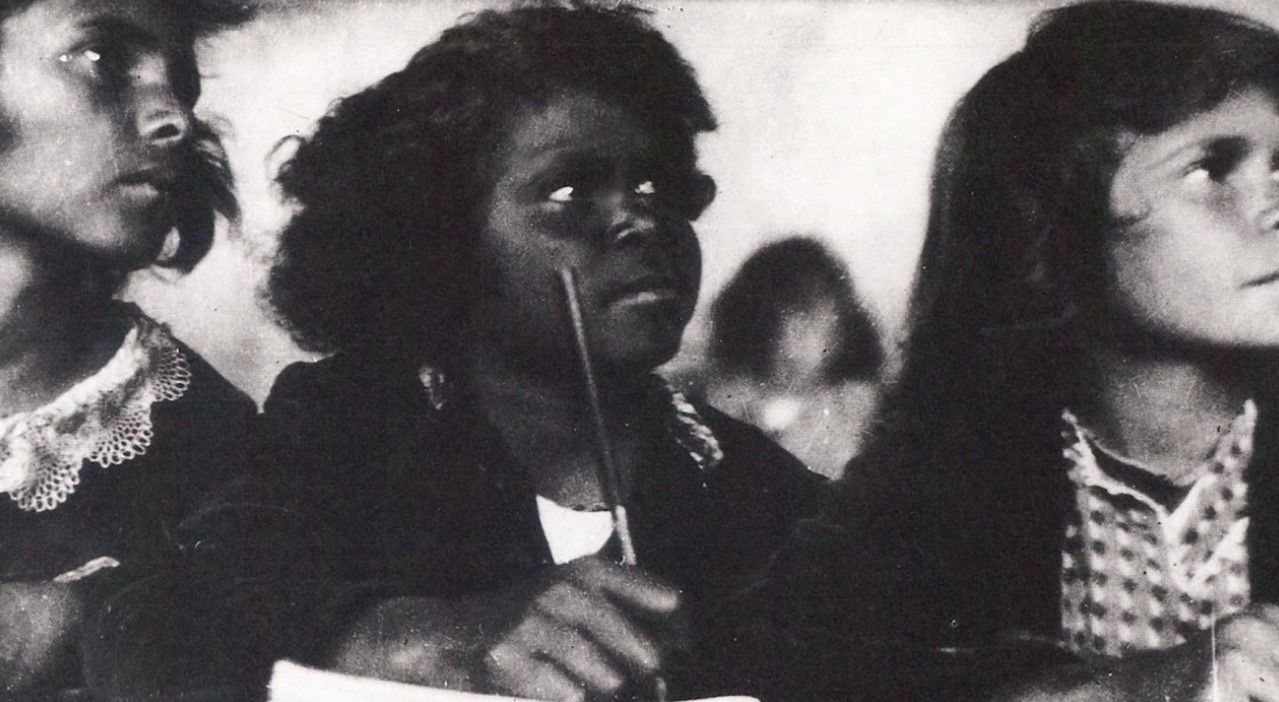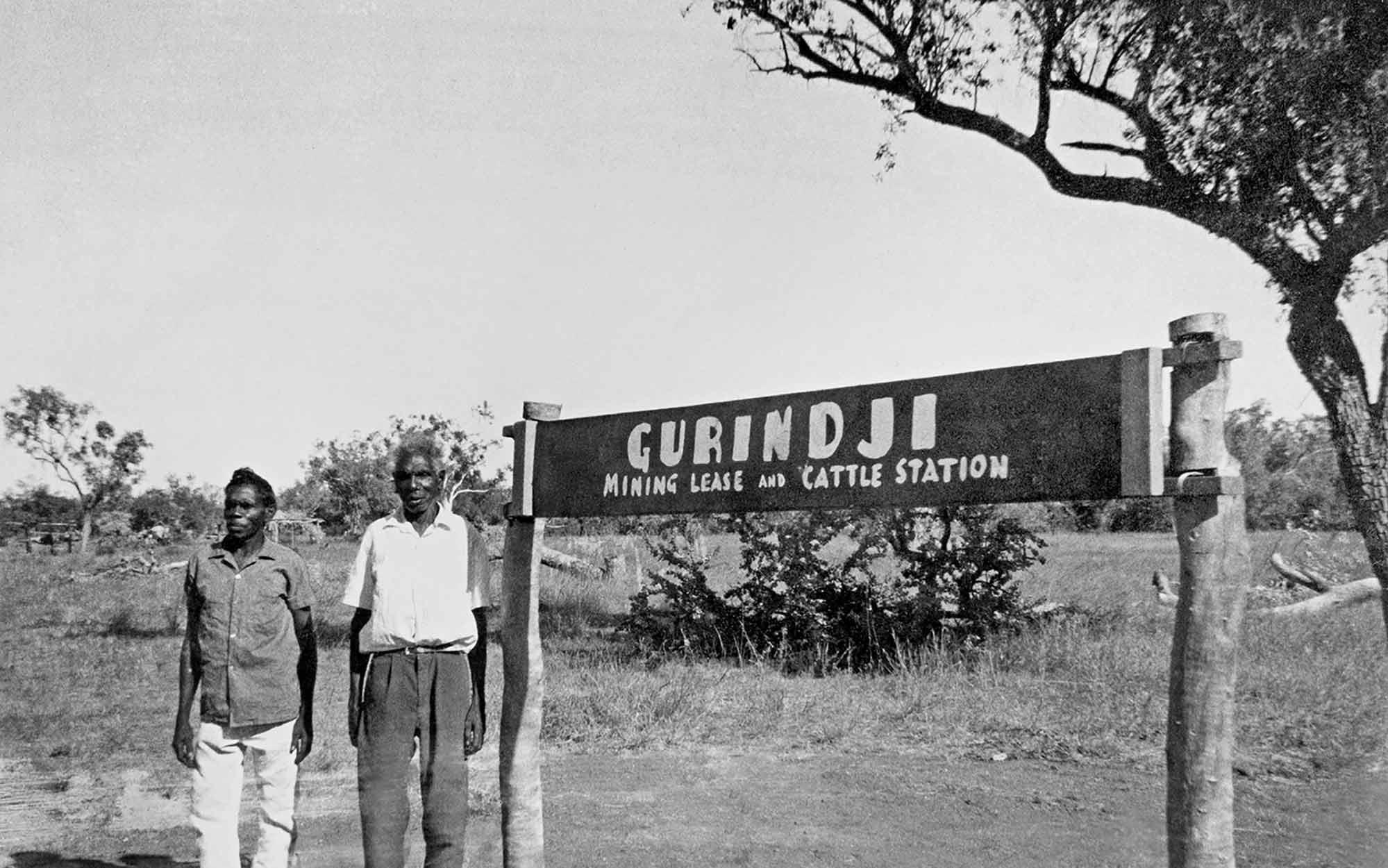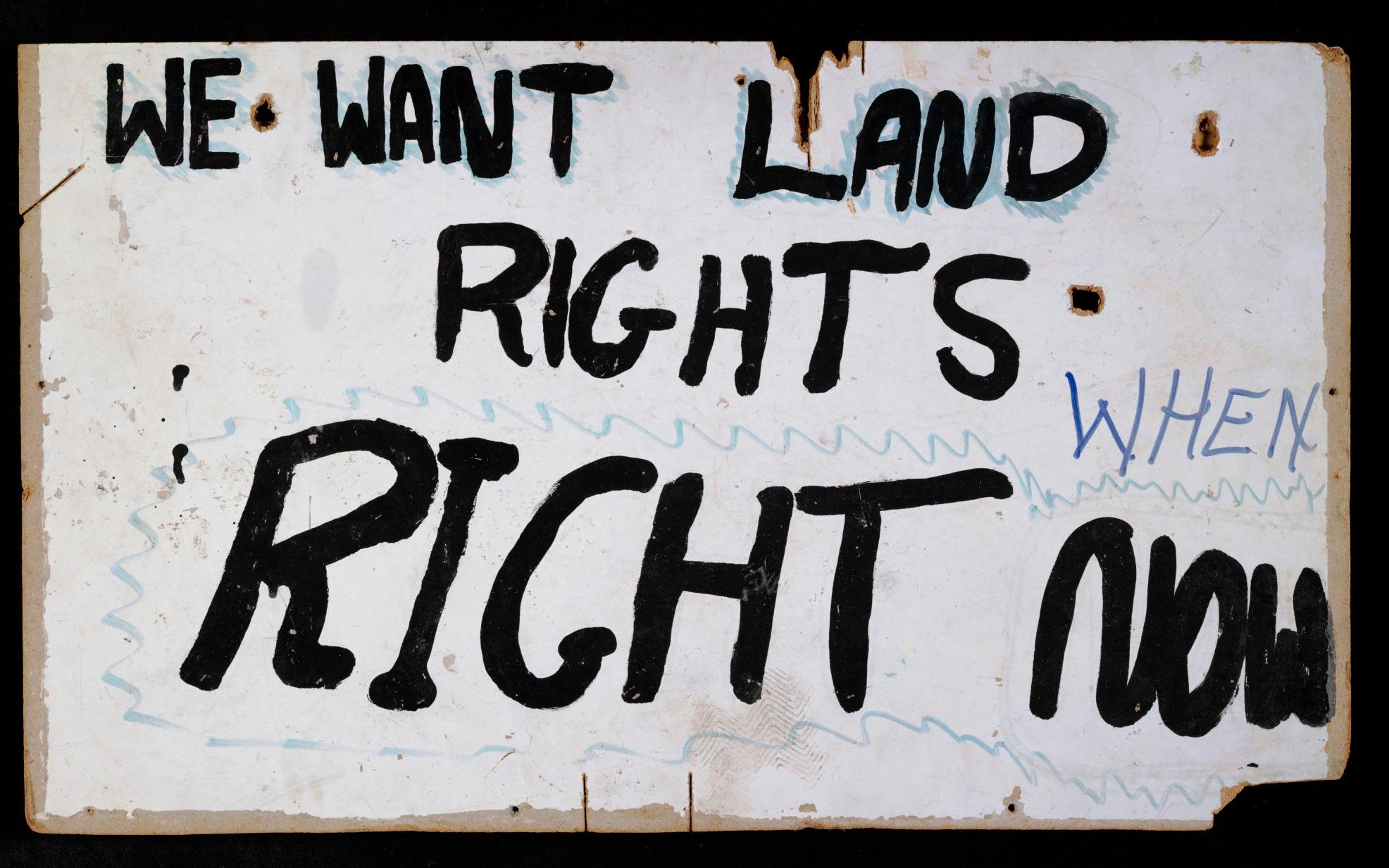‘We want land, not handouts’
1972: Aboriginal Tent Embassy established in front of Parliament House, Canberra
‘We want land, not handouts’
1972: Aboriginal Tent Embassy established in front of Parliament House, Canberra
In a snapshot
On 26 January 1972, four First Nations men set up a beach umbrella on the lawns opposite Parliament House in Canberra. Describing the umbrella as the ‘Aboriginal Embassy,’ the men were protesting about the Australian Government’s land rights policies. The Aboriginal Tent Embassy still exists today. The protesters’ goals have changed over time to include First Nations sovereignty and self-determination.

 Can you find out?
Can you find out?
1. What were the two land rights cases in the 1960s and 1970s that came before the tent embassy?
2. How did the actions of the McMahon government prompt the creation of the Aboriginal Tent Embassy?
3. What is the Aboriginal Tent Embassy and why did First Nations people use the word ‘embassy’ to describe it?
Why did First Nations land rights become a national issue?
First Nations people have been fighting to retain the rights to their traditional lands since British colonisation of the Australian continent. During the 1960s and 1970s campaigns for land rights began to get national attention.
There were two especially important land rights cases that took place in the Northern Territory. The first began in 1966 when about 200 Gurindji stockmen, domestic workers and their families walked off Wave Hill Station. The Gurindji were protesting against low wages, poor working conditions and the loss of their traditional lands. This protest lasted 9 years.
In the second case, the Northern Territory Supreme Court decided in 1972 not to grant the Yolŋu people, an Aboriginal group in Arnhem Land, the land rights they had argued for. Instead, a mining company was allowed to mine on land where the Yolŋu lived, which included sacred sites and areas used for hunting and food-gathering.
In response to the growing demands for land rights, Prime Minister William McMahon’s government announced a new land rights policy in 1972. Under this policy, First Nations people could apply for 50-year land leases, but these excluded mineral and forest rights. This angered many First Nations people.
‘With its flags fluttering proudly in the breeze, the Aboriginal Embassy on the lawns opposite Federal Parliament has been one of the most successful press and parliamentary lobbies in Australian political history.’
John Newfong, Identity, 1972
How was the tent embassy set up?
On 26 January 1972 a group of four First Nations men protested against Prime Minister McMahon’s land rights decision by putting up a beach umbrella on the lawn outside Parliament House in Canberra. They said they were setting up an ‘Aboriginal Embassy’. The men said that they felt like foreigners in their own country.
Research task
Find out how many embassies and high commissions are located in Canberra. What is their purpose?
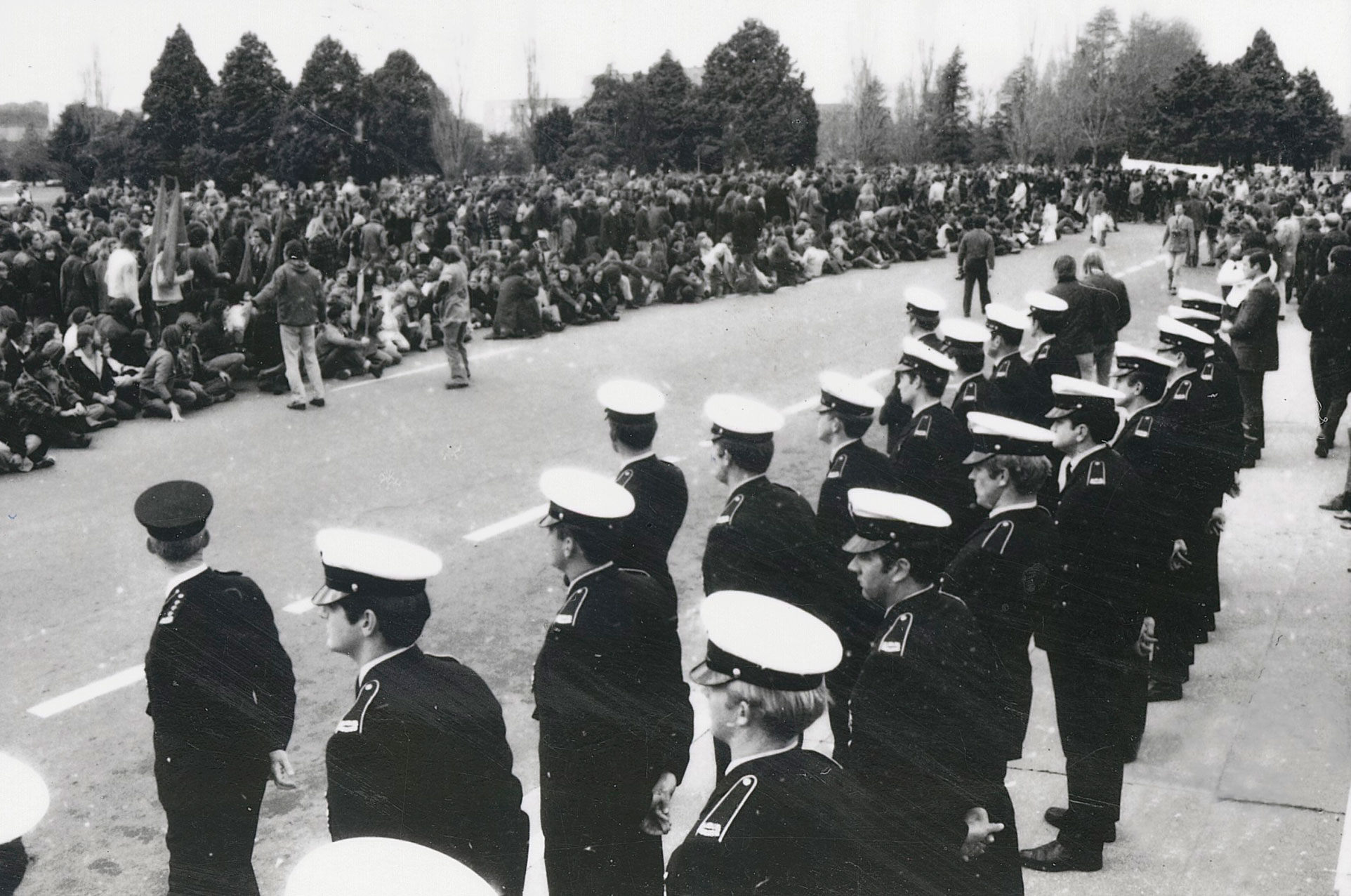
The beach umbrella was soon replaced by tents and Indigenous and non-Indigenous protesters started camping there. The Australian Government ordered the protesters to move and the police were sent in several times to remove them, but the protesters returned.
Groups from the tent embassy organised protest marches and spoke with politicians and the general community about land rights.
Between 1972 and 1992 the tent embassy was temporarily set up at several different places around Canberra.
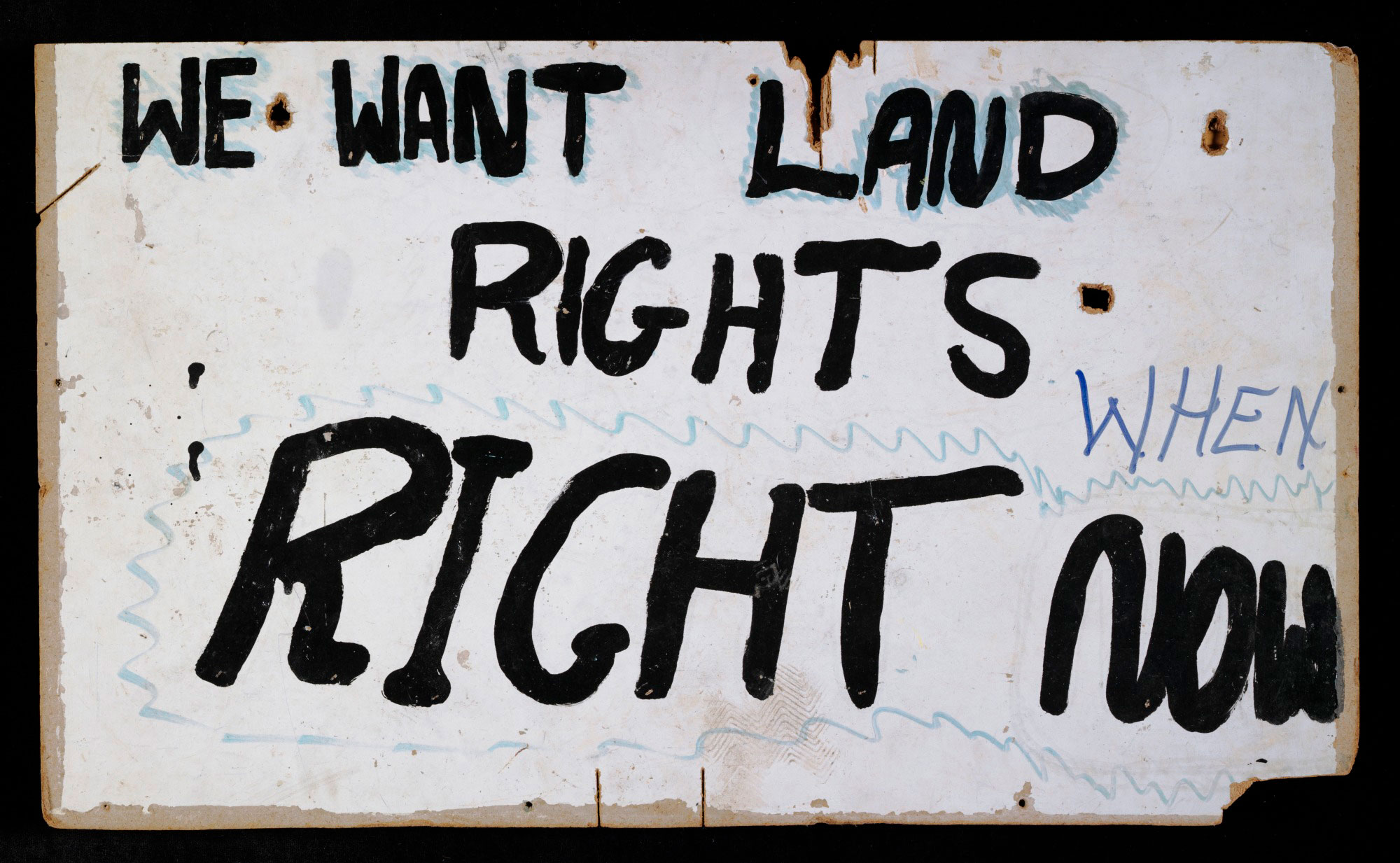
What happened to the Aboriginal Tent Embassy in the 1990s?
In 1992, on the 20th anniversary of the original protests, the embassy was permanently set up on its original site on the lawns outside Old Parliament House. In 1995 the site was listed on the Register of the National Estate, which recognised the importance of the tent embassy as a historic place.
What does the Aboriginal Tent Embassy want to achieve today?
Over time the goals of tent embassy protesters have changed. The biggest issues being promoted by the tent embassy continue to be the campaign for First Nations sovereignty over the continent and the right to self-determination.
Read a longer version of this Defining Moment on the National Museum of Australia’s website.
Research task
Do some research to find out which famous Yothu Yindi song released in 1991 came from the fight for land rights, including the Yolŋu people’s claim to their land.
 What did you learn?
What did you learn?
1. What were the two land rights cases in the 1960s and 1970s that came before the tent embassy?
2. How did the actions of the McMahon government prompt the creation of the Aboriginal Tent Embassy?
3. What is the Aboriginal Tent Embassy and why did First Nations people use the word ‘embassy’ to describe it?






